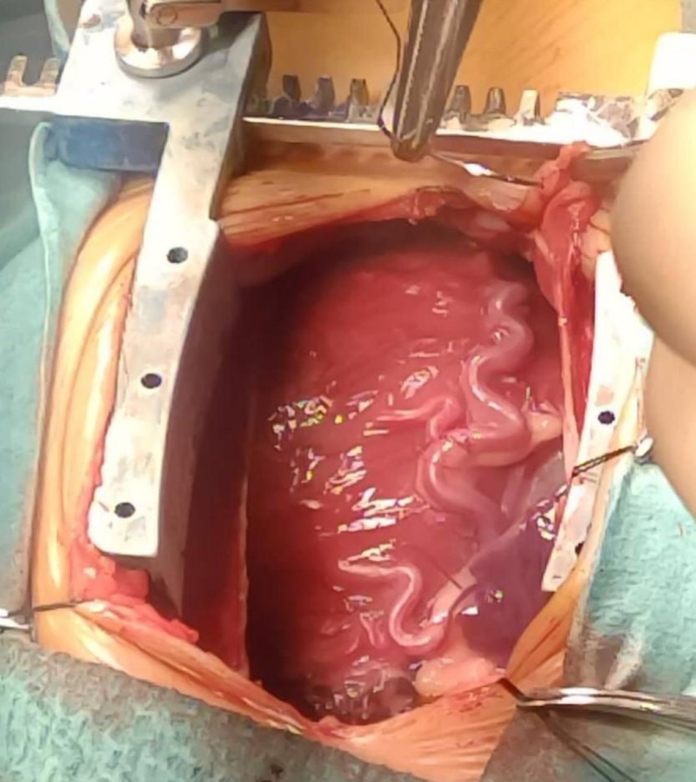
Rare congenital anomaly leading to severe left ventricular dysfunction in infant
This article describes the case of a 5-month old infant who presented to the emergency with respiratory distress and feeding intolerance. Doctors diagnosed her with severe left ventricular dysfunction. Examination was significant for tachypnoea and wheezing. Doctors diagnosed the infant with bronchiolitis based on these findings. However, further examinations led to the diagnosis of severe left ventricular dysfunction in the infant.
Auscultation revealed a grade II/VI holosystolic murmur with irradiation to the axilla on the left lower sternal border. The infant’s liver was also palpable 4 cm below the costal margin. In addition to this, she had poor weight gain. Doctors advised a chest X-ray which showed cardiomegaly with a cardiothoracic index of 70%.
The investigations findings prompted a referral to paediatric cardiology.
Doctors further referred the 5-month old for an ECG which showed anomalies in the left precordial leads. The findings were suggestive of dilation in the left ventricle. Although, the investigation findings did not show any signs of ischemia. Echocardiogram showed dilation of the left ventricle, diastolic diameter of 46 mm and ejection fraction of 25% showing moderate mitral regurgitation because of poor coaptation of leaflet. Based on these findings, the patient was referred to cardiac surgery.
The patient was referred for surgery and she was transferred to the intensive care unit on inotropic support and mechanical ventilation. Repeat echocardiogram after surgery showed severe left ventricular dysfunction with dilation of the left ventricle. However, there were improvements in segmental contractility and anterograde flow in the anterior descending artery. In addition, there was mild mitral regurgitation with good function in the right ventricle. Although the patient was haemodynamically stable, she went into cardiorespiratory arrest. She aspirated respiratory secretions and could not be saved.
The patient’s left ventricular dysfunction was concluded to be caused by a rare congenital anomaly known as anomalous left coronary artery from the pulmonary artery (ALCAPA). If left untreated, it has a mortality rate of 90%.
References
Severe left ventricular dysfunction in an infant https://casereports.bmj.com/content/14/5/e241092



